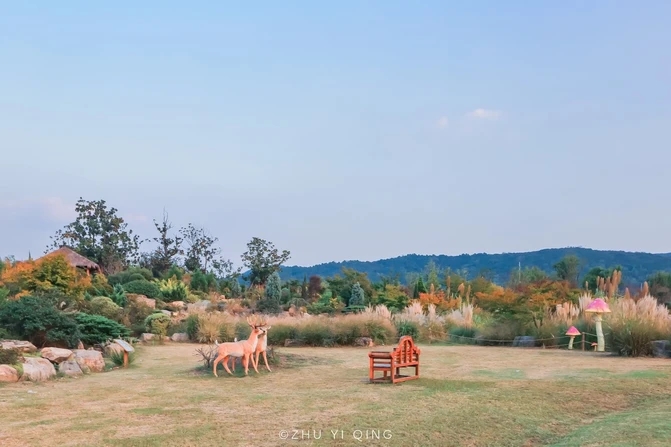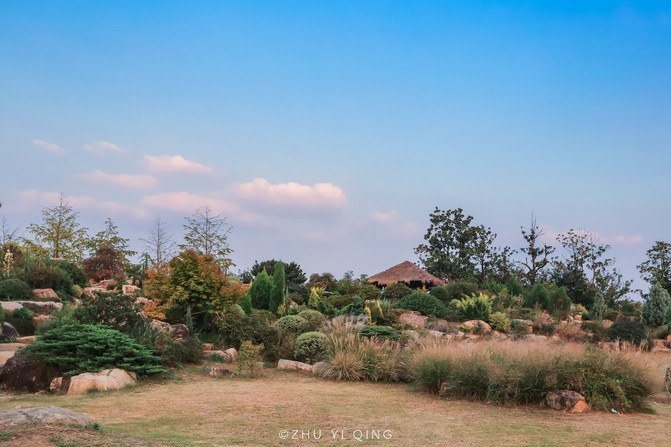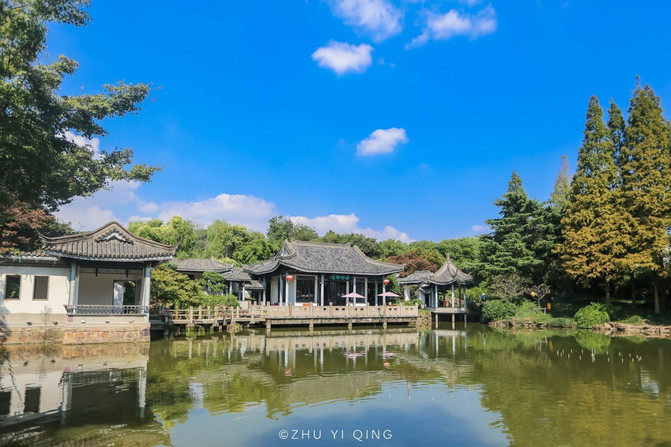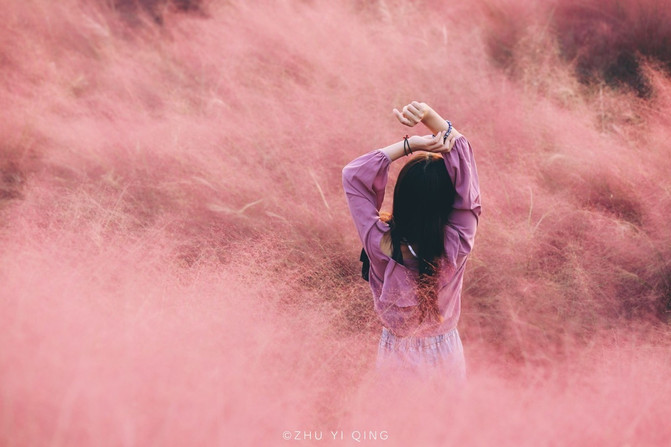
A Zen Journey in Wuxi: A Romantic Date with Muhlenbergia capillaris
Introduction
Wuxi, a city known as the “Land of Fish and Rice”, is a popular destination in the area. It boasts attractions like the magnificent Lingshan Grand Buddha, the cherry – blossom – filled Yuantouzhu, the Water Margin City, and various ancient towns full of Jiangnan charm. This trip in autumn brought me not only the cultural heritage but also a sea of beautiful flowers.

Blooming Wonders in Wuxi
The Flower Planet at Jiulongwan Huacai Town
Autumn and spring are the best seasons for flower – viewing in Wuxi. While spring offers azaleas and cherry blossoms, autumn presents Muhlenbergia capillaris and 百日菊. Among the many flower – viewing spots, the newly – emerged Jiulongwan Huacai Town is a must – visit.
The highlight of this town is the Flower Planet, covering an area of 525 mu. It includes gardens such as the English rock garden, rose garden, and water lily garden. As you enter this “flower planet”, you’ll be surrounded by a world of flowers, free from the outside distractions.
The most charming color in the Flower Planet is pink. I accidentally encountered a large area of Muhlenbergia capillaris, which originally comes from the North American prairie. When in bloom, its pink – purple flower spikes look like soft threads. From afar, it resembles a large piece of pink cotton candy. Although I thought I had missed the best viewing period, the sight of this delicate pink grass sea was truly a pleasant surprise.
In addition to the Muhlenbergia capillaris, the rock garden is also worth exploring. The combination of rocks and flowers creates a unique beauty. In autumn, the sulfur cosmos is in full bloom. Its orange flowers are particularly elegant against the setting sun. The Flower Planet is home to thousands of plant species, making it a real “planet of flowers”. It also combines flower – viewing with parent – child leisure, nature education, and outdoor expansion activities.

The Spiritual Realm of Lingshan
The Origin of Lingshan
We all know about the classic Chinese novel Journey to the West. The “Western Heaven” that Tang Seng went to refers to the Vulture Peak in India, where Sakyamuni became a Buddha. However, after his return from the Western Regions, Xuanzang named a small Lingshan in Wuxi. He found that the scenery here was similar to that of the Vulture Peak, and thus the name “Lingshan” was given.
Lingshan Scenic Area
The Lingshan Grand Buddha in Wuxi has become a symbol of the city. It combines natural scenery with Buddhist culture. To enter the scenic area, you first pass through the Wuming Bridge, similar to the Golden Water Bridge in front of Tiananmen. Then you reach the main entrance of Lingshan Scenic Area, with the words “Rulai Ruyuan” written on it, which makes people feel respectful.
Inside the scenic area, there is a huge Buddha’s footprint, a sacred relic for Buddhists. The Wuzhi Gate of Lingshan is a large stone archway with profound Buddhist cultural connotations, engraved with the six perfections of Buddhism.
The main road to the Nine – Dragon Bathing the Buddha is decorated with seven lotus – flower reliefs on the ground, symbolizing “lotus flowers blooming with each step”. At the end of the road is the main square of the Nine – Dragon Bathing the Buddha. Before the performance, it is a bronze lotus platform. When the performance starts, six large lotus petals slowly open, and a golden – bodied Prince Buddha rises and rotates. Nine dragons spray water columns more than 30 meters high to bathe the Buddha statue, accompanied by the sound of drums and the changing fountains.
Behind the Nine – Dragon Bathing the Buddha is the Relief of Subduing Demons, which vividly depicts the story of Buddha subduing demons. Further inside, there is the Ashoka Pillar, a rare granite pillar hand – carved in China.
At the foot of the Lingshan Grand Buddha, there is a “First Palm under Heaven”, a one – to – one copy of the right hand of the Buddha. People often walk around it clockwise to pray for safety or burn incense to offer blessings.
The Lingshan Grand Buddha is the tallest giant Buddha in China, standing 88 meters high (101.5 meters including the three – layer pedestal). It faces Taihu Lake and has a kind and peaceful appearance. You can either climb the Dengyun Road or take the elevator to reach the foot of the Buddha. Once there, you can hug the Buddha’s foot to pray for peace and overlook the entire Lingshan Scenic Area.
After visiting the Buddha, you can take a shuttle bus to the Lingshan Brahma Palace. With its magnificent palace – like appearance and a combination of Chinese and Western architectural styles, it is like a treasure house filled with various artworks.

The Zen – filled Nianhua Bay
A Tang – style Zen Town
Nianhua Bay is a unique Zen – themed resort on the shore of Taihu Lake. Its name comes from the idiom “Nianhua Yixiao”. The town’s architecture imitates the Tang and Song styles, although it may give people a feeling of a Japanese ancient street at first sight. In fact, it is a great inheritance and promotion of Chinese Tang and Song culture, combined with the unique water system of Jiangnan towns.
The Charm of Xiangyue Flower Street
Xiangyue Flower Street is the core area of Nianhua Bay. As you enter, you’ll feel as if you’ve traveled back to the Tang Dynasty, with pavilions, streams, and Tang – style buildings in sight. The street is full of shops related to Zen, such as the Zen music hall, the flower – art shops, and various other stores. The whole street is permeated with a strong sense of Zen.
The Symbol of Nianhua Bay – Nianhua Pagoda
In the center of the town stands the Nianhua Pagoda, a typical Japanese – style five – story wooden pavilion. It is the symbol of Nianhua Bay, exuding a sense of Zen even in the bustling crowd. Next to it is the Miaoyin Stage, where traditional drama and Zen culture are combined, and there are regular performances.
Cultural Experiences in Nianhua Bay
In Nianhua Bay, you can experience the unique Zen culture. For example, you can copy Buddhist scriptures in the Happy Scripture – Copying Room, which allows you to calm down and enjoy your own time. You can also wear Hanfu in the Hanfu Experience Hall and take beautiful photos in the town.
The Flower Sea in Nianhua Bay
At the end





